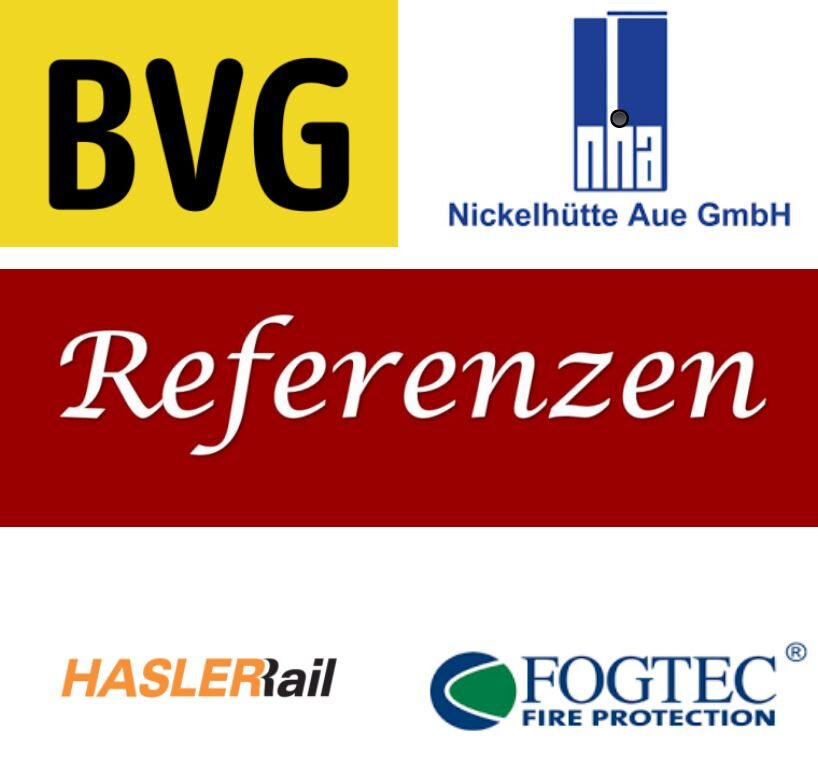DIN CEN/TS 14972 | Fixed firefighting systems - Fine spray extinguishing systems - Planning and installation |
DIN CEN 14972 Attachment A.1* | Test method flammable liquids |
DIN CEN/TS 14972 Attachment A.2* | Test method Fire test for cable ducts |
DIN CEN/TS 14972 Attachment F* | Fire test procedure for certain areas of use of the medium fire hazard class OH3 |
DIN EN 14972-01:2020
| Fine spray extinguishing systems - Part 1: Design, installation, inspection and maintenance |
| DIN EN 14972-02:2024 | Fixed firefighting systems - Water mist systems - Part 2: Test protocol for shopping areas for automatic nozzle systems
|
DIN EN 14972-03:2021 | Fixed firefighting systems - Water mist systems - Part 3: Test report for offices, schools and hotels for automatic nozzle systems |
| DIN EN 14972-04:2024 | Fixed firefighting systems - Water mist systems - Part 4: Test protocol for non-storage occupancies for automatic nozzle systems
|
| DIN EN 14972-05:2024 | Fixed firefighting systems - Fine spray extinguishing systems - Part 5: Test protocol for car garages for automatic nozzle systems |
| DIN EN 14972-06:2023 | Fixed firefighting systems - Fine spray extinguishing systems - Part 6: Test protocol for false floors and false ceilings for automatic nozzle systems |
| DIN EN 14972-07:2023 | Fixed firefighting systems - Fine spray extinguishing systems - Part 7: Test protocol for commercial low hazard occupancies for automatic nozzle systems
|
DIN EN 14972-08:2020
| Fixed firefighting systems - Fine spray extinguishing systems - Part 8: Test report for machines in enclosures larger than 260 m³ for open nozzle systems |
DIN EN 14972-09:2020 | Fixed firefighting systems - Water mist systems - Part 9: Test protocol for machinery in enclosures not exceeding 260 m³ for open nozzle systems
|
DIN EN 14972-10:2022 | Fixed firefighting systems - Fine spray extinguishing systems - Part 10: Fire test report for atrium protection with side wall nozzles for open nozzle systems |
| DIN EN 14972-11:2023 | Fixed firefighting systems - Water mist systems - Part 11: Test protocol for cable tunnels for open nozzle systems
|
| DIN EN 14972-12:2024 | Fixed firefighting systems - Water mist systems - Part 12: Test protocol for commercial deep fat cooking fryers for manually activated open nozzle systems
|
| DIN EN 14972-13:2024 | Fixed firefighting systems - Water mist systems - Part 13: Test protocol for wet benches and other similar processing equipment for open nozzle systems
|
DIN EN 14972-14:2021 | Fixed firefighting systems - Water mist systems - Part 14: Fire test report for combustion turbines in enclosures larger than 260 m³ for open nozzle systems |
DIN EN 14972-15:2021 | Fixed firefighting systems - Water mist systems - Part 15: Fire test report for combustion turbines in enclosures up to 260 m³ for open nozzle systems |
DIN EN 14972-16:2019 | Fixed firefighting systems - Fine mist extinguishing systems - Part 16: Fire test report for industrial large-scale open nozzle fine mist extinguishing systems |
| DIN EN 14972-17:2024 | Fixed firefighting systems - Water mist systems - Part 17: Test protocol for residential occupancies for automatic nozzle systems
|
IMO Resolution MSC 265 (84):2008-05* | Addendum to the revised guidelines for the approval of sprinkler systems in accordance with those referenced in the SOLAS regulations (Resolution A.800(19)). |
FM 5560:2021* | Approval standard for water mist system / fire tests |
Anhänge: A – N* | Fire tests |
VdS OH1 office: 2010 | Test setup and requirements - OH1 (office) |
VdS OH1 Hotel: 2012 | Test setup and requirements - OH1 (Hotel) |
VdS OH1 Intermediate floor: 2012 | Test setup and requirements - OH1 (intermediate floor and ceilings) |
VdS OH3 Bearing: 2011 | Test setup and requirements - OH3 (ST1 and ST5/5, sales, storage and technical areas) |
VdS Cable ducts: 2012 | Test setup and requirements - cable ducts |
VdS Sidewall nozzle: 2013 | Protection of LH and OH areas with sidewall nozzles |
VdS Chipboard press: 2000 | Object protection with fine spray nozzles for particleboard presses |
VdS Machine protection: 2007 | Fire tests for machine protection |
VdS OH2 Underground garages: 2014 | Test setup and requirements - OH2 (underground garages) |
Tunnel systems - guide recommended by fire protection experts |
|
SOLIT² Leitfaden für Ingenieure, 2012* | Guideline for the holistic evaluation of tunnels with fire-fighting systems and their planning |
Main document with annex 7* | Fire tests and scenarios for the evaluation of fire fighting systems |
Rolling stock - guide recommended by fire safety experts |
|
ARGE Guideline BBA - Part 2:2018* | Fire fighting in railway vehicles: functional verification of the effectiveness of fire fighting systems in rooms accessible to persons, electrical control cabinets and areas of combustion engines |
UNI 11565:2021-09*
| Schienenfahrzeuge - Entwurf, Installation, Validierung und Instandhaltung von Brandmelde- und Löschanlagen in Schienenfahrzeugen - Allgemeine Grundsätze |
Appendix B* | Prüfung des Brandschutzes/Löschsystems |
Fire resistance tests of high-voltage energy storage systems |
|
UNECE Reg. No. 100:2016-01 | Einheitliche Bedingungen für die Genehmigung von Fahrzeugen hinsichtlich der besonderen Anforderungen an den elektrischen Antriebsstrang (E/ECE/324/ Add.99 - E/ECE/TRANS/505/Add.99) |
Annex 8E | Feuerbeständigkeit |




